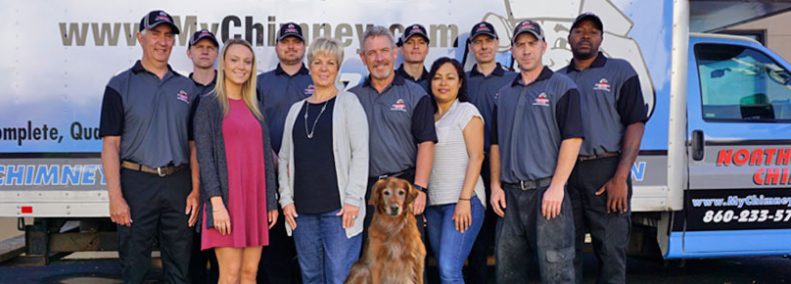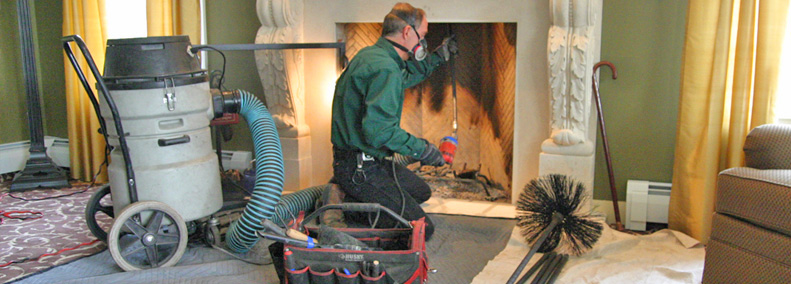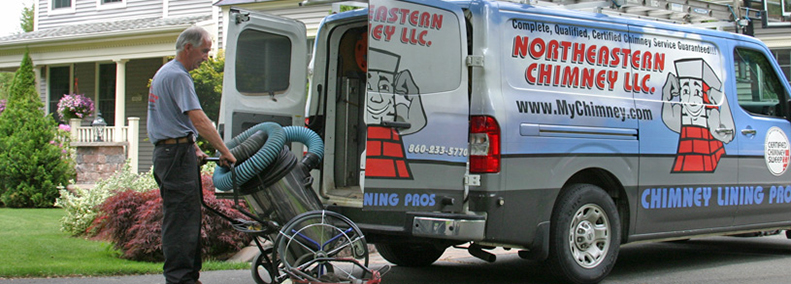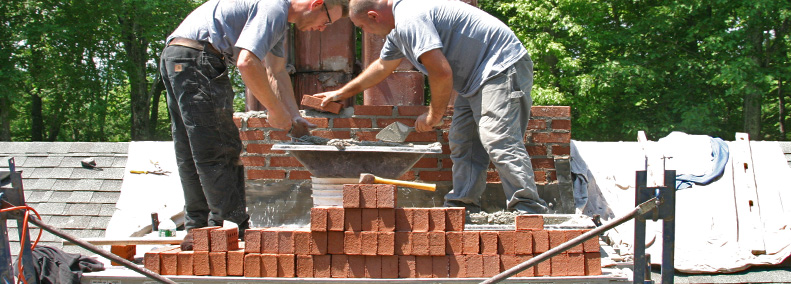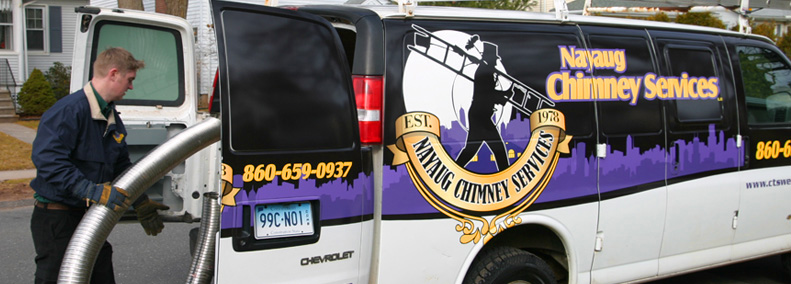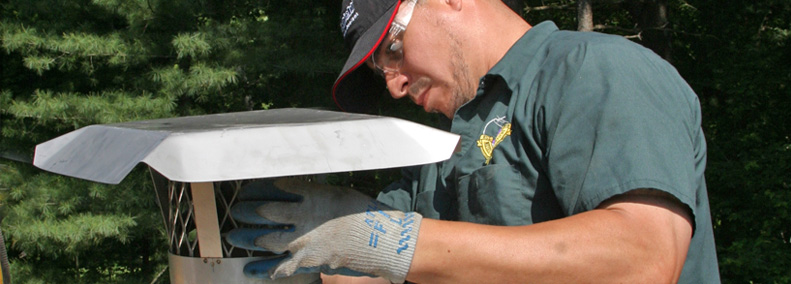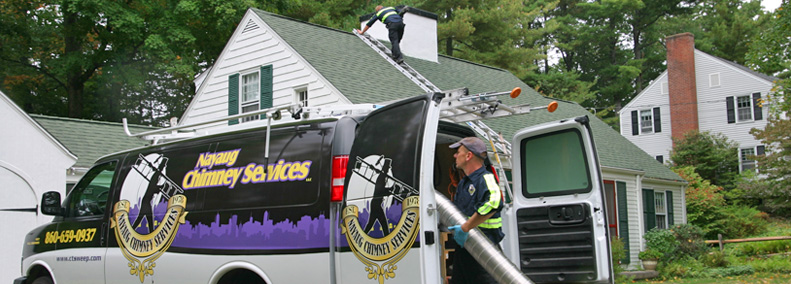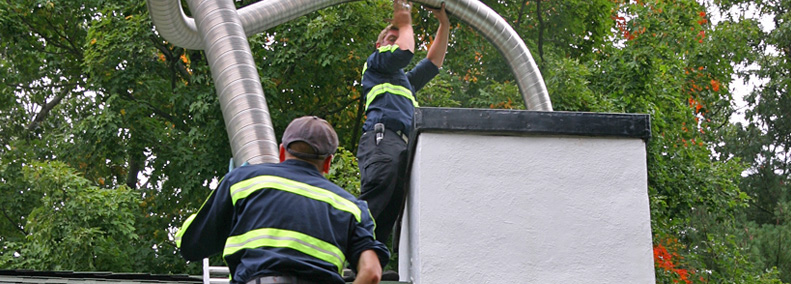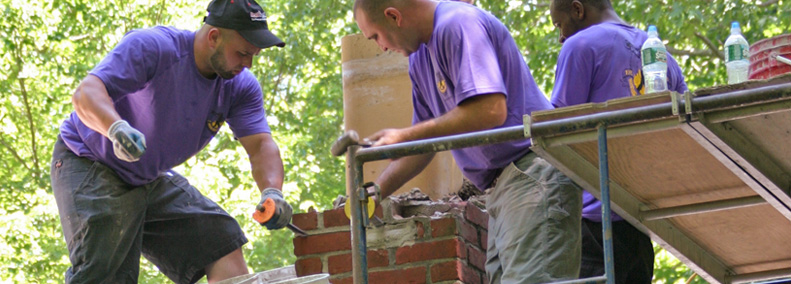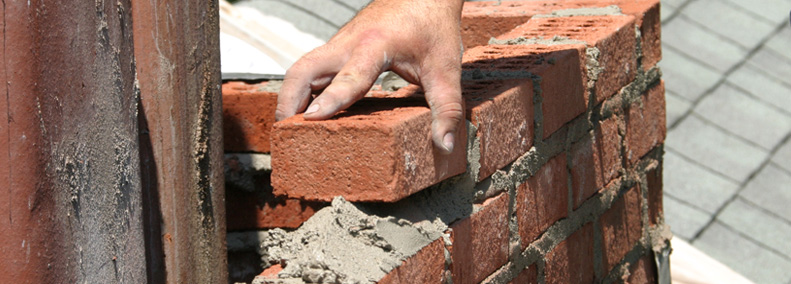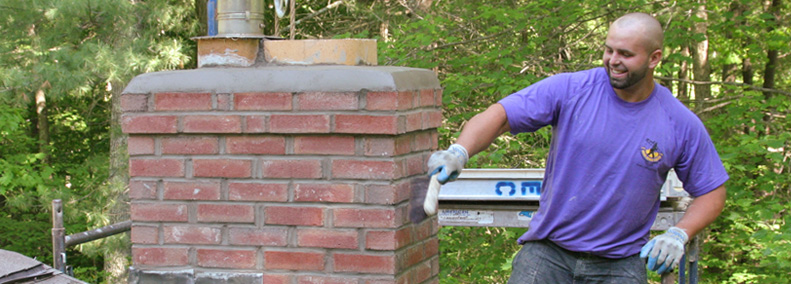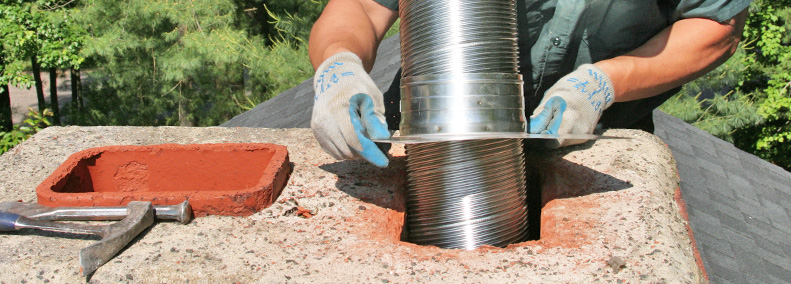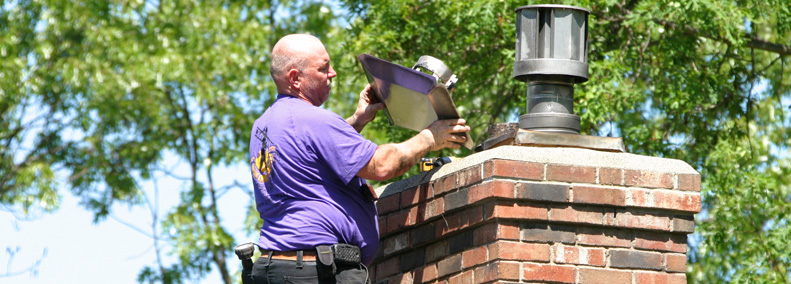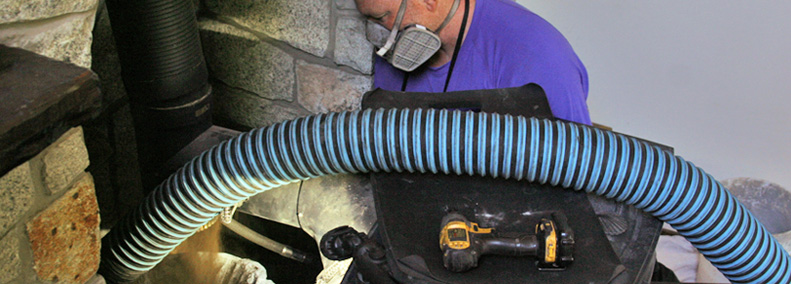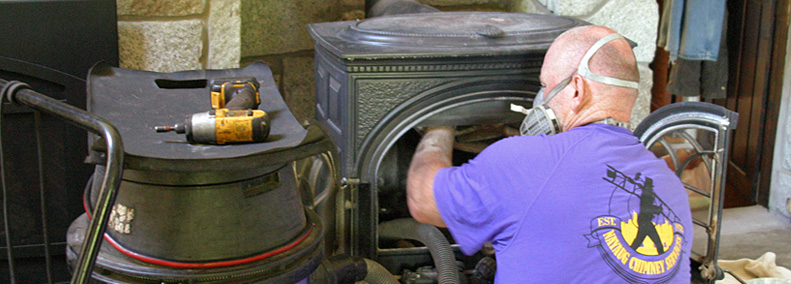01.10.12
Chimney Fires Can Be Prevented
 Chimney Fires occur at an alarming rate in our country, over 25,000 chimney fires account for over 120 million dollars in damage to property every year. Thousands of injuries and even many deaths result every year from chimney fires that spread to the structure of the home. Chimney liners or structural problems can allow high temperatures, sparks and embers to escape to combustible areas in walls, roofs or attics. A common cause of chimney fires is creosote inside the chimney catching fire and burning inside the chimney. Creosote is a by-product of burning that coats the inside of your chimney that needs to be removed during regular annual chimney cleaning by chimney sweeps.
Chimney Fires occur at an alarming rate in our country, over 25,000 chimney fires account for over 120 million dollars in damage to property every year. Thousands of injuries and even many deaths result every year from chimney fires that spread to the structure of the home. Chimney liners or structural problems can allow high temperatures, sparks and embers to escape to combustible areas in walls, roofs or attics. A common cause of chimney fires is creosote inside the chimney catching fire and burning inside the chimney. Creosote is a by-product of burning that coats the inside of your chimney that needs to be removed during regular annual chimney cleaning by chimney sweeps.
Unwanted Blazes – A Fire in Your Chimney
 Along with the soft crackling of the wood, your fire should only produce pleasant sounds, not ones like a freight train barreling toward your house at 100 miles an hour. When this raging noise is coming from your chimney walls, it means you have a powerful chimney fire on your hands. But chimney fires are not always that easy to detect.
Along with the soft crackling of the wood, your fire should only produce pleasant sounds, not ones like a freight train barreling toward your house at 100 miles an hour. When this raging noise is coming from your chimney walls, it means you have a powerful chimney fire on your hands. But chimney fires are not always that easy to detect.
Learn to Identify a Chimney Fire
There are two different types of chimney fires that are quite easy to tell apart, but both have the ability to cause substantial damage to your chimney and possibly your home.
Free Burning – These are the fires that sound like you have your own freight train or roaring airplane in your chimney. The blaze is loud and unmistakable. Oftentimes dramatic flames or billowing smoke may lap out of your chimney top. Your neighbors or people walking by may be alarmed by the noise and sites from this fire.
Slow Burning – This quieter version of a chimney fire is no less dangerous. You may not even know it has taken place. These undetected fires burn slowly and at high temperatures that can cause more than just structural damage to your chimney, they can easily catch flammable parts of your home on fire as well.
What to do if a chimney fire happens at your residence.
 As with any other type of fire, the first step that should always be taken is to get everyone out of harm’s way and call the fire department. After everyone is safe and assuming the situation permits without putting yourself in danger, you can first try to cut off the air supply leading to the chimney. To do this close the damper on the chimney or any other pipes to attempt to smother the fire this way. Then close the glass doors or any other fire grate and leave the home. Once outside, take a garden hose and spray water on the roof around the chimney to prevent the roof from catching on fire. Once the fire is completely put out, it is best to monitor the wall temperature of any surrounding walls for the next few hours to ensure no other part of the home catches on fire.
As with any other type of fire, the first step that should always be taken is to get everyone out of harm’s way and call the fire department. After everyone is safe and assuming the situation permits without putting yourself in danger, you can first try to cut off the air supply leading to the chimney. To do this close the damper on the chimney or any other pipes to attempt to smother the fire this way. Then close the glass doors or any other fire grate and leave the home. Once outside, take a garden hose and spray water on the roof around the chimney to prevent the roof from catching on fire. Once the fire is completely put out, it is best to monitor the wall temperature of any surrounding walls for the next few hours to ensure no other part of the home catches on fire.
 The danger with chimney fires, even after they have been put out, is that if it happened once, it will most likely happen again if no further measures are taken. For this reason, after one of these fires has taken place, it is important to call a chimney professional right away to determine the cause of the fire. Besides removing the reason for the fire after one has raged inside of your chimney walls, prevention is also very important.
The danger with chimney fires, even after they have been put out, is that if it happened once, it will most likely happen again if no further measures are taken. For this reason, after one of these fires has taken place, it is important to call a chimney professional right away to determine the cause of the fire. Besides removing the reason for the fire after one has raged inside of your chimney walls, prevention is also very important.
The key to preventing a chimney fire is to have a cleaning burning fire.
The Best Ways to Prevent a Chimney Fire
· Only burn seasoned or dried out wood – Wood that is completely dry will sound hollow when hit against another piece of wood, it will be dark in color and may have cracks in the ends. It takes about 6 months for wood to be ready to burn.
· Start fires with clean newspaper or dry kindling – Gasoline or kerosene should never be used to start a fire.
· Never burn cardboard boxes, wrapping paper or your Christmas tree.
· Burn large logs, rather than many smaller logs when possible.
· Get regular chimney inspections and cleanings to remove the excess creosote from the chimney walls and ensure safe burning.
What causes the fire in the first place?
 Creosote build-up is the main cause of chimney fires. The creosote comes from particles that were not fully burned during the fire and when the temperatures in the chimney lowered, they attached to the chimney walls forming the creosote. In fact, when the temperatures within the chimney are below 250 degrees Fahrenheit, the substance in the smoke will condense and stick to the walls. When the temperature drops below 150 degrees Fahrenheit, the substance again changes form, this time to a dark, sticky substance. This dark sticky and sometimes flaky material can easily catch on fire, and thus is the root cause of the chimney fires.
Creosote build-up is the main cause of chimney fires. The creosote comes from particles that were not fully burned during the fire and when the temperatures in the chimney lowered, they attached to the chimney walls forming the creosote. In fact, when the temperatures within the chimney are below 250 degrees Fahrenheit, the substance in the smoke will condense and stick to the walls. When the temperature drops below 150 degrees Fahrenheit, the substance again changes form, this time to a dark, sticky substance. This dark sticky and sometimes flaky material can easily catch on fire, and thus is the root cause of the chimney fires.
How much damage can a chimney fire cause?
The type of chimney and the strength of the fire determine how much damage is done to the chimney.
 Masonry Chimneys – A chimney fire can cause severe damage to the structure of the chimney. The walls may crack and the tile or clay liner pieces may break or even collapse from the high heat. A chimney fire can get up to 2000 degrees Fahrenheit and that is enough heat to even melt metals. Oftentimes the first fire will do some type of damage to the structure and the liner will crack or the mortar will be displaced. Then when the issue is not addressed, the second chimney fire will utilize the pathway created by the first fire and make nearby flammable materials of the home go up into flames. The heat is often hot enough to even catch the roof or other wood around the chimney on fire even without first damaging the structure.
Masonry Chimneys – A chimney fire can cause severe damage to the structure of the chimney. The walls may crack and the tile or clay liner pieces may break or even collapse from the high heat. A chimney fire can get up to 2000 degrees Fahrenheit and that is enough heat to even melt metals. Oftentimes the first fire will do some type of damage to the structure and the liner will crack or the mortar will be displaced. Then when the issue is not addressed, the second chimney fire will utilize the pathway created by the first fire and make nearby flammable materials of the home go up into flames. The heat is often hot enough to even catch the roof or other wood around the chimney on fire even without first damaging the structure.
Prefabricated Chimneys – For these factory built, metal chimneys, the structure must pass regulated guidelines and stand up to high temperatures. This does not mean they are immune to damage from chimney fires though. The metal liner of prefabricated chimneys can collapse or be distorted by high temperatures. If this happens to this type of chimney, it is very important that the liner is completely replaced before the chimney is used again.
 Chimney fires are a dangerous problem to experience first hand, but the good news is that they are also entirely preventable. It is important to always take care to burn only the materials that are meant to be burnt and not use ones that could harm the chimney. This is crucial to keeping your chimney in a safe and working condition. While using the correct fuel is important, a chimney fire can still occur even with these precautionary measures in place. This is why annual chimney inspections and cleanings are another critical part of home maintenance.
Chimney fires are a dangerous problem to experience first hand, but the good news is that they are also entirely preventable. It is important to always take care to burn only the materials that are meant to be burnt and not use ones that could harm the chimney. This is crucial to keeping your chimney in a safe and working condition. While using the correct fuel is important, a chimney fire can still occur even with these precautionary measures in place. This is why annual chimney inspections and cleanings are another critical part of home maintenance.

Don't wait until it is too late. Take precautions now to make sure you have a clean, safe chimney system.
A clean chimney will not burst into flame, therefore proper care and regular cleanings are necessary to ensure the safety of your family and your home. Don’t get caught off guard by the roaring sounds and raging blazes coming from inside the chimney walls, keep a clean chimney and you’ll have a safer house!

 Tap to Call Now
Tap to Call Now